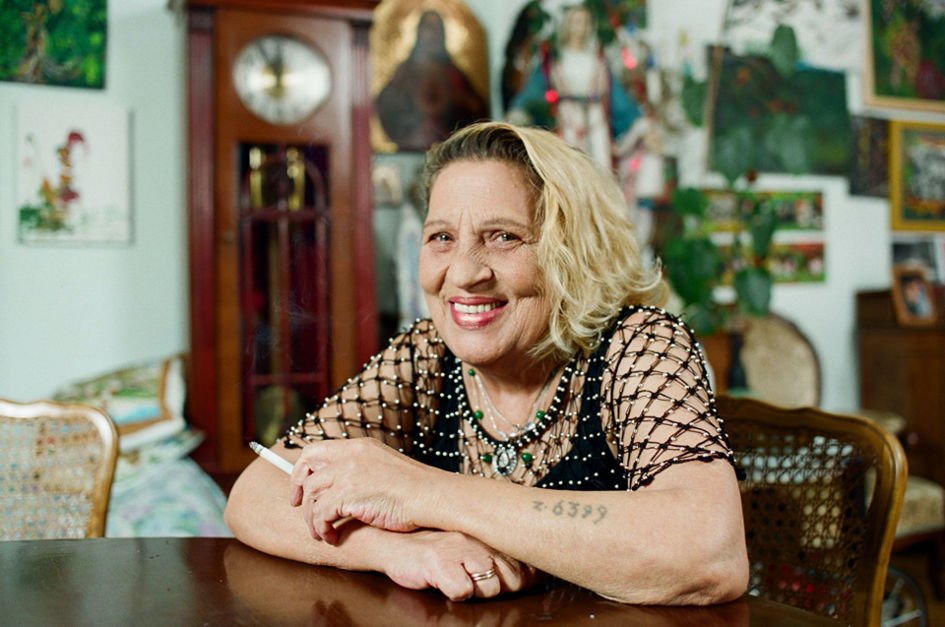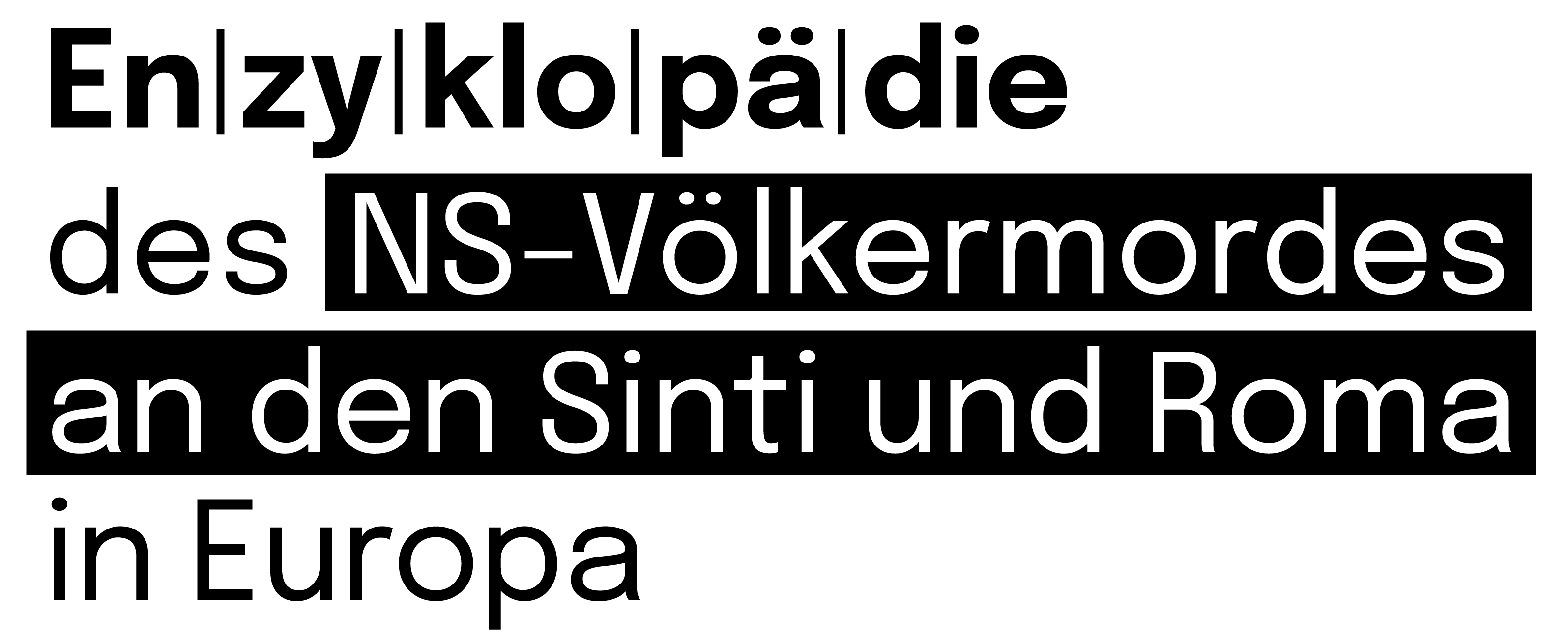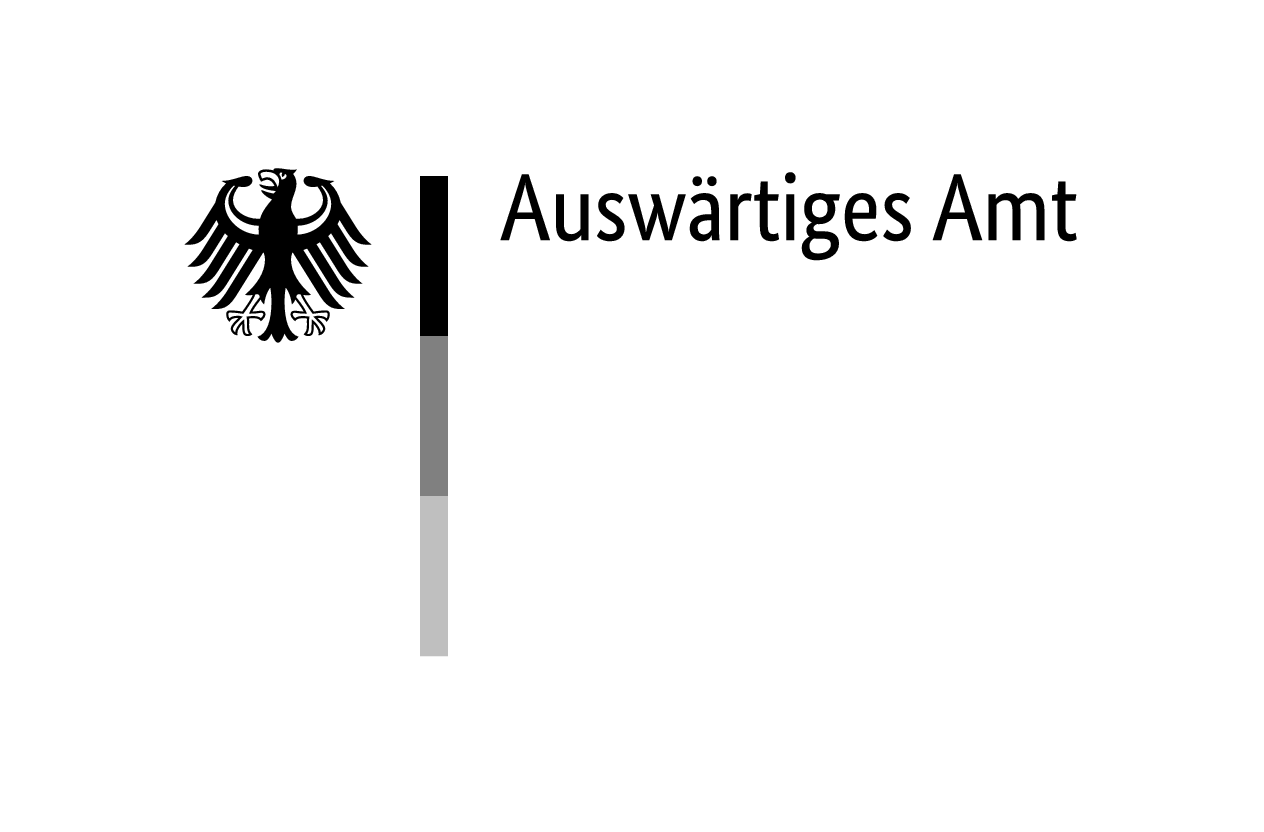Margarete ‘Ceija’ Stojka, born on 23 May 1933 in Kraubath an der Mur, Austria, was an outstanding Romani author and artist. She was one of the first Austrian Romani women to publicly share her experiences as a survivor of Nazi persecution in her biographical prose texts, poems, and pictures, thereby contributing significantly to the visibility and recognition of the genocide of Roma and Sinti. She became a central voice in European Romani historiography and left behind an important legacy of remembrance culture through her artistic work. Ceija Stojka was also involved in public history and education projects and in Roma and Sinti organisations. In 2009, she was honoured with the official title of professor by the Austrian Ministry for Education, Art and Culture.
Childhood, Family and Nazi Persecution
Ceija Stojka grew up with her five siblings Marija ‘Mitzi’ (born 1926), Katharina ‘Kathi’ (born 1927), Johann ‘Hansi’ (also called ‘Mongo’) (1929–2014), Karl ‘Karli’ (1931–2003) and Josef ‘Ossi’ (1935–1943) in a travelling and trading Lovara family. In her descriptions of the time before the persecution, she unfolds a world of images of nature and closeness to nature, humour and joy, as well as the everyday life of travelling and the sense of belonging that she experienced in her Romani family and community. She describes a peaceful time and a happy childhood.1Stojka, Auschwitz ist mein Mantel, 11–18; Stojka et. al., Meine Wahl zu schreiben.
With the Annexation of Austria to the German Reich in March 1938 and the beginning of direct persecution, the Stojka family’s life changed fundamentally.2Stojka, Wir leben im Verborgenen. The increasing deprivation of rights was also reflected in the everyday dealings of Roma and Sinti: the family was no longer able to secure its livelihood through its itinerant trade. In 1939, they were forced to move to Vienna and convert their caravan into a wooden hut, where they lived from then on. The first family member to be interned was Karl ‘Wakar’ (or ‘Wacker’) Horvath (1908–1942), Ceija Stojka’s father, who was sent to Dachau concentration camp in January 1941. After several weeks in the concentration camps of Neuengamme and Sachsenhausen, he was taken from Dachau to the Hartheim killing centre on 28 November 1942 as part of the ‘14f13’ killing operation, and murdered there that same day.3Cf. Danckwortt, “‘Der Boden unter unseren Füßen,’” 36 f.
According to Ceija Stojka’s recollections, the Gestapo surrounded her father’s house with a wire fence soon after his deportation and forbade the family to go outside the fence. One day, Ceija Stojka’s paternal grandmother, Helene ‘Baranka’ Huber (1874–c. 1941/42), was caught by the Gestapo while sneaking out of the house to get food for the family. She did not survive.4The grandmother was probably deported to the Litzmannstadt Ghetto in November 1941, like Ceija’s maternal grandparents, and either died in the ghetto or was murdered in the Kulmhof extermination camp. Cf. ibid., 23. Shortly thereafter, Ceija Stojka’s older sister, Kathi Horvath, was also arrested and sent to the Lackenbach detention camp. To avoid being rounded up and arrested, Ceija Stojka’s mother Maria ‘Sidonie’ Stojka (1906–1972) and the remaining children hid under blankets of leaves in the nearby Kongresspark for weeks.
Deportation to Auschwitz
In March 1943, 10-year-old Ceija Stojka was deported with her mother and siblings to Auschwitz-Birkenau concentration and extermination camp. Here she was reunited with her sister Kathi. Ceija and her youngest brother Ossi Stojka were forced to conduct hard labour in the camp quarry. Everyday life in the camp was characterised by violence, hunger and humiliation; diseases such as noma, typhus, typhoid and scabies were also rampant. Ossi Stojka contracted typhus and did not survive.
After the decision was made to close the camp section BIIe, where Roma and Sinti were imprisoned, the SS [Schutzstaffel] selected those who were able to work from those who were not, and before they were taken to other camps, they were housed for a short time in the main camp at Auschwitz. Sidonie Stojka saved her daughter Ceija’s life by advising her to claim to be 16 years old. Ceija Stojka recalled in her autobiography: ‘The brief stay in Auschwitz was gruesome. We heard from the others that anyone who had remained in Birkenau had been gassed that same day. The wind carried the smell over to us. Streams of tears flowed.’5Stojka, “We Live in Secrecy,” in The Memoirs of Ceija Stojka, 52. Ceija Stojka’s brothers Mongo and Karli Stojka were classified as fit for work and sent to Buchenwald and Flossenbürg, while Ceija Stojka, her sister Kathi and their mother were sent to Ravensbrück concentration camp. In Ravensbrück, Ceija Stojka had to work in the sewing room, among other things, and narrowly escaped forced sterilisation thanks to a power outage.
In early 1945, Sidonie and Ceija Stojka were transferred to Bergen-Belsen concentration camp.6In Träume ich, dass ich lebe Ceija Stojka gives the date of the transfer as January 1945; it was probably March 1945; see Danckwortt, “‘Der Boden unter unseren Füßen,’” 39. The conditions in this camp were devastating, leading to mass deaths from malnutrition and disease. In Bergen-Belsen, Ceija Stojka relieved her excruciating hunger with the leaves and resin of her ‘life tree’. The tree appears repeatedly in her writings and paintings as a symbol of survival. Later, she usually drew a small branch above her name in her personal signature of the works of art, thus adding the strength and hope of life to the horror depicted. On 15 April 1945, Ceija Stojka and her mother were liberated from Bergen-Belsen by British troops. They reached Vienna after a four-month walk. There they were reunited with Kathi, Mitzi and, later, Hansi and Karli Stojka. Of their original family of 200, only Sidonie Stojka and five of her six children survived the genocide. These experiences had a profound impact on Ceija Stojkas’s future life and artistic work.
Author and Artist
In 1988, at the age of 55, Ceija Stojka published her autobiography, ‘Wir leben im Verborgenen’ [We Live in Secrecy],7The book was presented in Oberwart on 8 December 1988. Cf. Die Burgenlandwoche, vol. 58, no. 50, 14 December 1988, 30. I thank Gerhard Baumgartner for the reference. ‘Wir leben im Verborgenen’ was published in English in Stojka, The Memoirs of Ceija Stojka. which was one of the first works of testimony to the suffering of Roma and Sinti during the Nazi regime. This work is characterised by a language that is poignant, idiosyncratic, detailed and rich in imagery. In her account, she addresses the difficulties of everyday life in the post-war period. She reports on persistent racism and her various efforts to make a living, such as peddling fabrics and selling carpets. She also describes the challenges she faced as a single mother of three children. In another autobiographical work published in 2005 (‘Träume ich, dass ich lebe?’ [Am I Dreaming I’m Alive?])8The book was published in English in Stojka, The Memoirs of Ceija Stojka. Ceija Stojka processed her experiences in the Bergen-Belsen concentration camp. Her books became known to an international audience through translations into English, French, Dutch, Romanes and Czech.

Die Überlebende Ceija Stojka (1933–2013) in ihrer Wohnung in Wien, Österreich, 1999. Ceija Stojka, eine Lowara, wuchs in einer Familie auf, die vom Pferdehandel lebte. Sie wurde 1943 mit ihrer Mutter und ihren Geschwistern in das Konzentrations- und Vernichtungslager Auschwitz-Birkenau deportiert. Der Vater war schon 1941 nach Dachau verschleppt und in der Tötungsanstalt Hartheim ermordet worden.
Ceija Stojka überlebte Auschwitz-Birkenau sowie die Konzentrationslager Ravensbrück und Bergen-Belsen. Seit der Veröffentlichung ihres ersten autobiografischen Buches im Jahr 1988 zählte sie zu den wichtigsten Stimmen der Überlebenden. Fortan machte sie sich als Aktivistin, Künstlerin und Schriftstellerin einen Namen. 2009 ernannte das österreichische Bundesministerium für Unterricht, Kunst und Kultur Ceija Stojka zur Professorin.
Fotograf:in: Navigator Film
Navigator Film: Ceija Stojka, AT 1999
Shortly after the publication of her first book, Ceija Stojka also discovered painting as a form of expression. Her pictures are a powerful means of coming to terms with the past and at the same time have a documentary character in their combination of drawings and texts. Her art is characterised by expressive motifs that depict the horrors of the concentration camps, the suffering and shame of the prisoners, the violence of the perpetrators and the architecture of the camps from a child’s perspective. At the same time, she worked with intense colours and cheerful motifs that express the beauty of nature and of living together in Romani communities. She left behind more than 1,000 works, which have been exhibited in Austria and internationally.
Ceija Stojka was a versatile artist who expressed herself in various creative fields. She also devoted herself to poetry. Her poems were published in several collections: in the illustrated book ‘Auschwitz ist mein Mantel’ [Auschwitz is My Overcoat] (2008) and in the publication ‘Meine Wahl zu schreiben – Ich kann es nicht / O fallo de isgiri – me tschichanaf les’ [My choice to write – I can’t] (2003). In addition to her literary works, Ceija Stojka also worked as a musician and released the album ‘Me Diklem Suno’ in 2000.
She received several awards for her work, including the Bruno Kreisky Prize for the ‘Political Book’ (1993), the Golden Cross of Merit of the State of Vienna (2003) and the Television Prize for Adult Education (2006). In 2014, a square in Vienna was named Ceija Stojka Square.
Her life and work have been portrayed in several documentaries, including ‘Ceija Stojka – das Porträt einer Romni’ [Ceija Stojka – Portrait of a Romni] (1999) and ‘Unter den Brettern hellgrünes Gras’ [Under the floorboards pale green grass] (2005). In her documentary films, Karin Berger (b. 1953), who has been a friend and companion of Ceija Stojka for many years, interweaves Ceija Stojka’s reflections on the past and her artistic work with historical material and questions of the present in a sensitive and penetrating way.
In addition to her artistic work, Ceija Stojka gave numerous lectures and led workshops and readings of her books, often with her daughter-in-law Gabrielle ‘Nuna’ Stojka (born 1960). She cooperated with Roma and Sinti organisations and was a participant in the first Romnja and Sintiza Women’s Conference in Germany (Cologne 1996).
Unfortunately, Ceija Stojka did not live to see her international breakthrough as an artist, for example the major exhibitions at the Maison Rouge in Paris (2018) and the Prado in Madrid (2020). She died in Vienna on 28 January 2013. Her estate is managed by her son Willibald ‘Hojda’ Stojka (born 1949). In 2018, the Ceija Stojka International Association was founded to support rights holders, protect her work, and promote awareness of it through exhibitions, publications, and other activities.9Cf. https://www.ceijastojka.org/theassociation [accessed: 13/11/2024].




